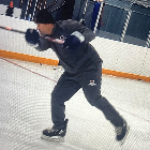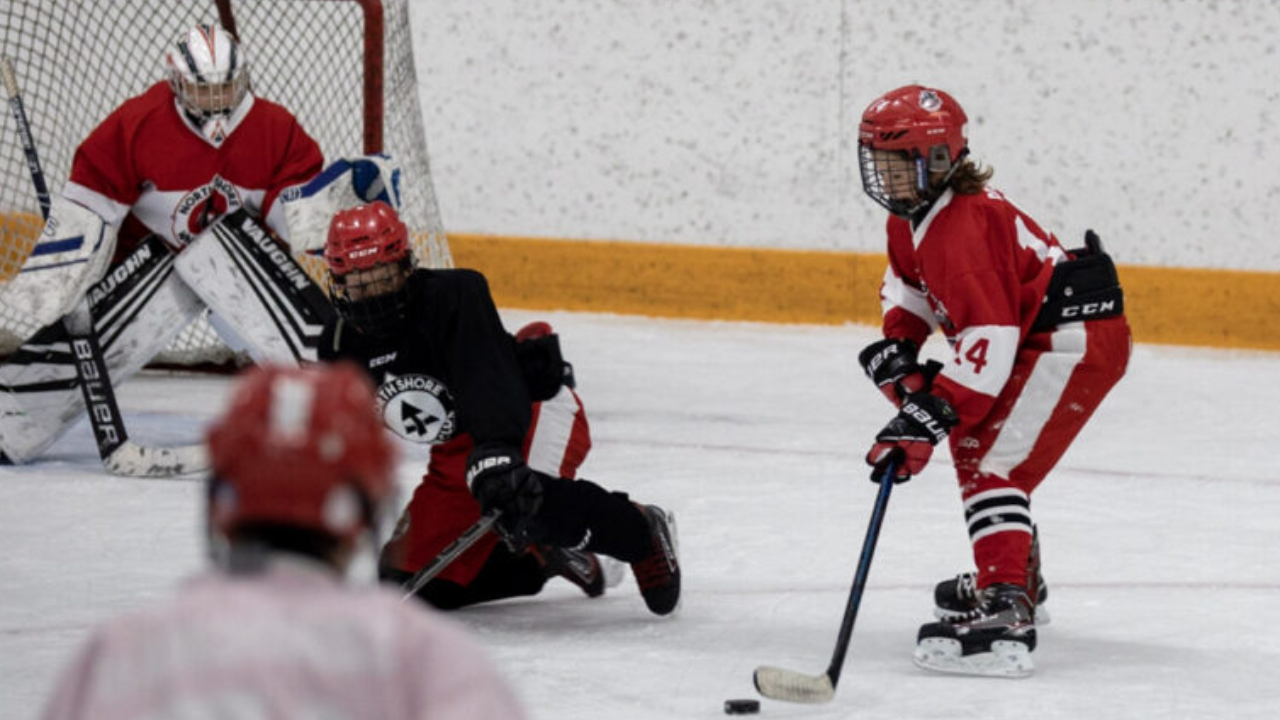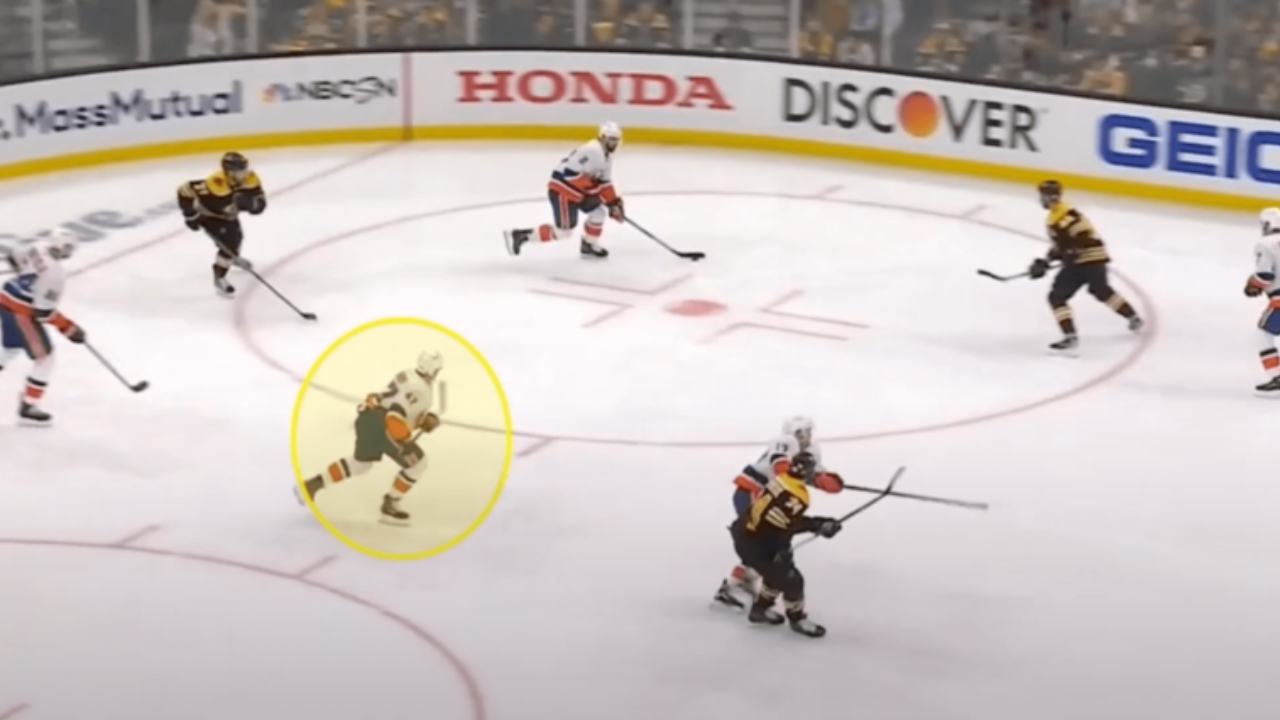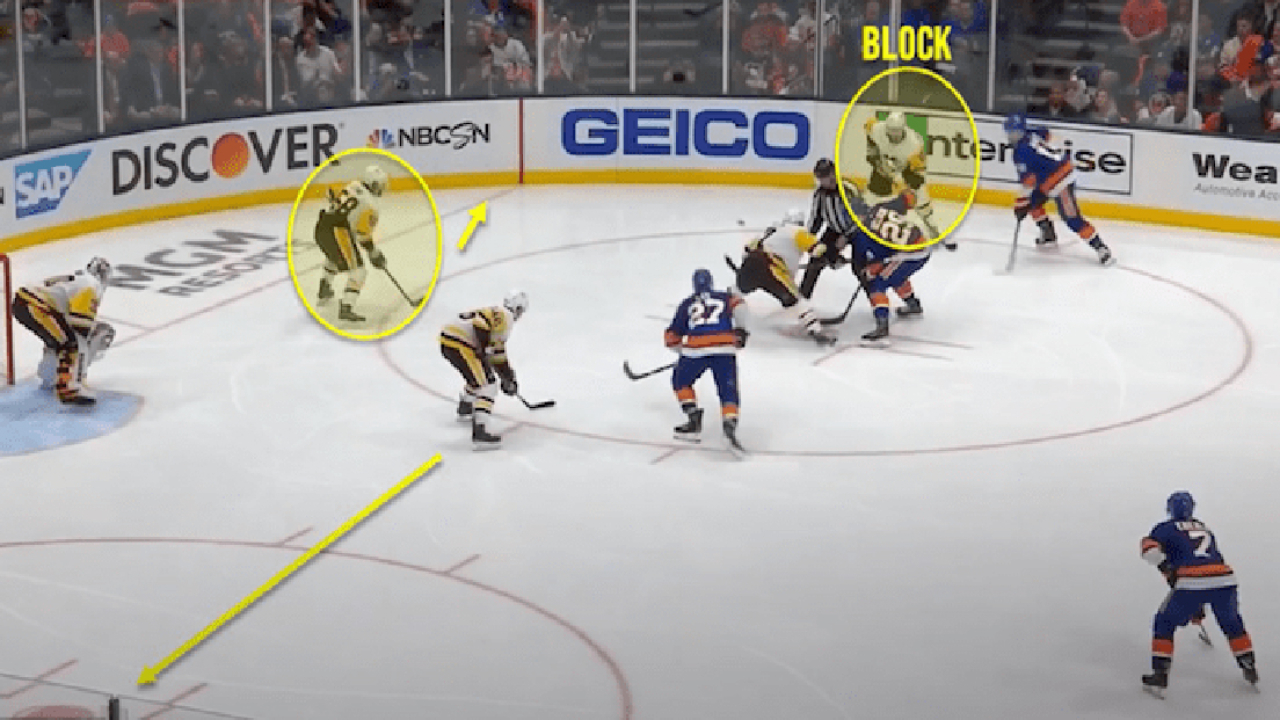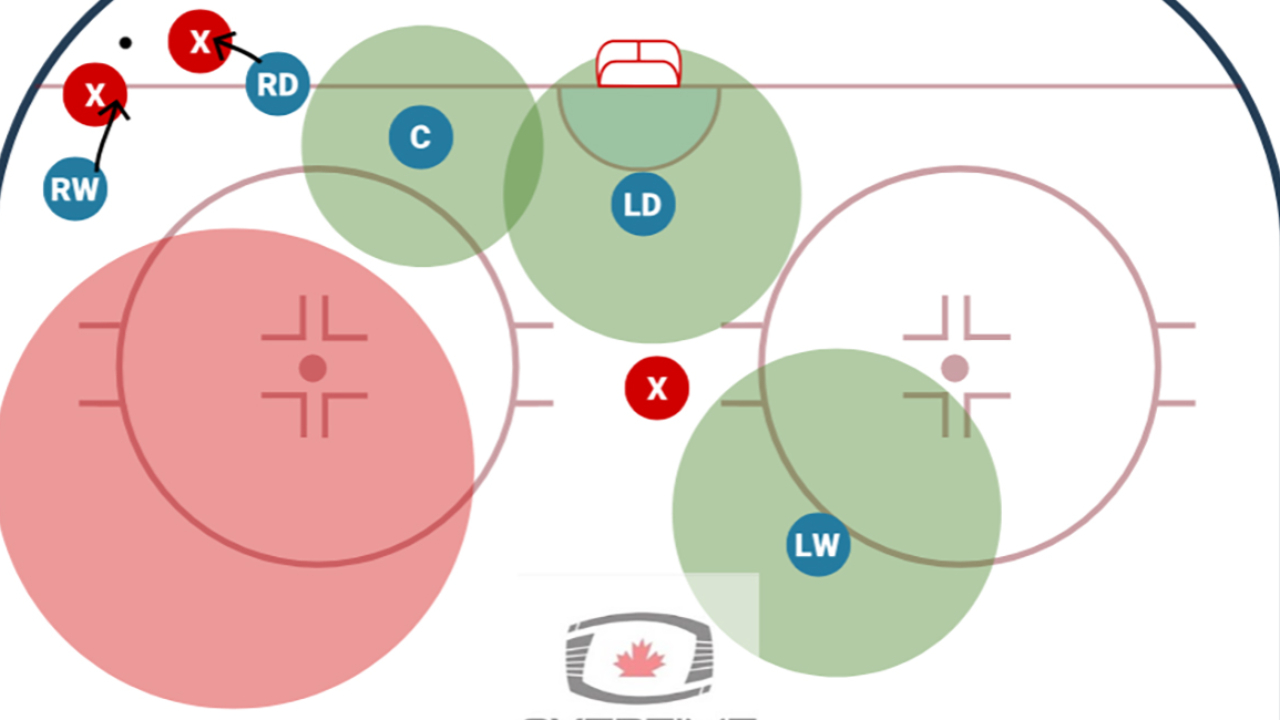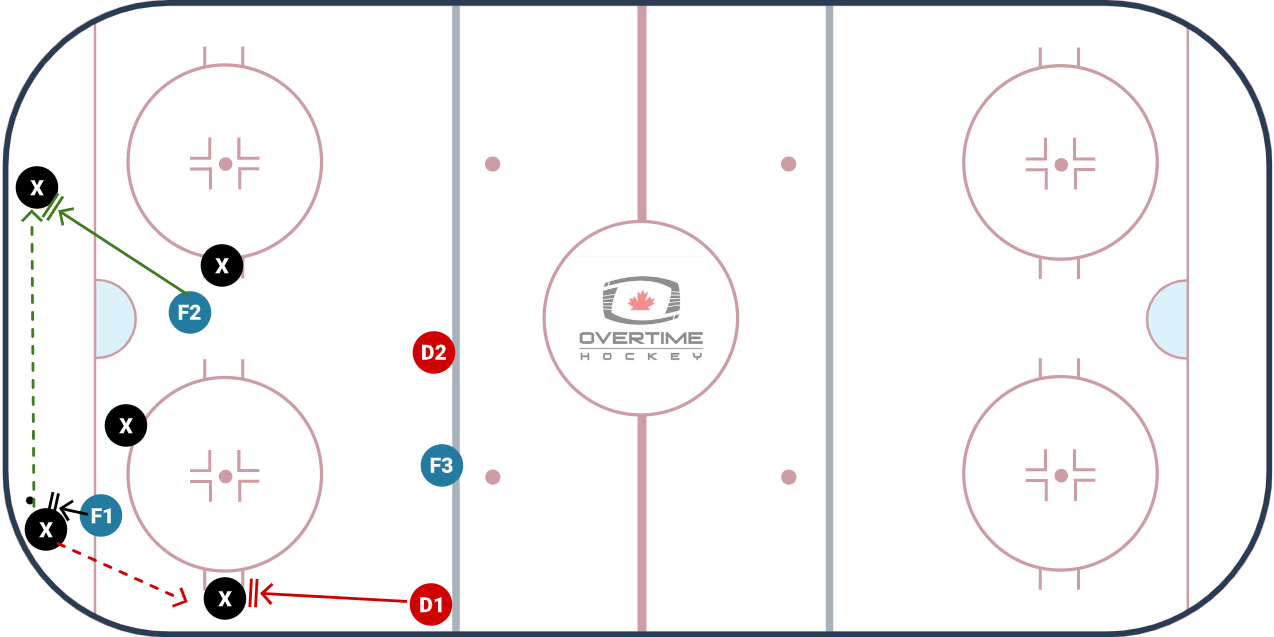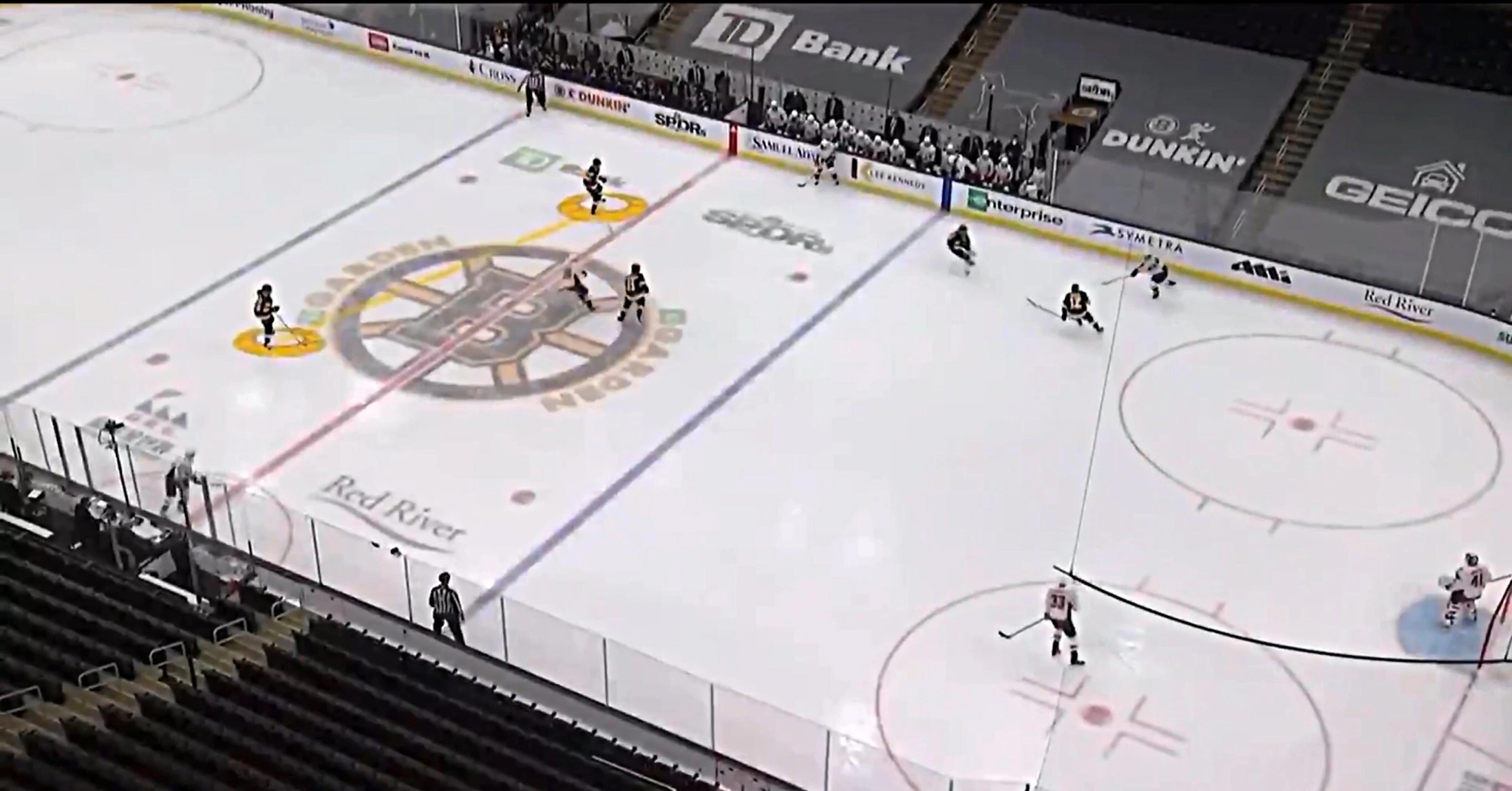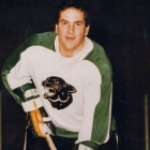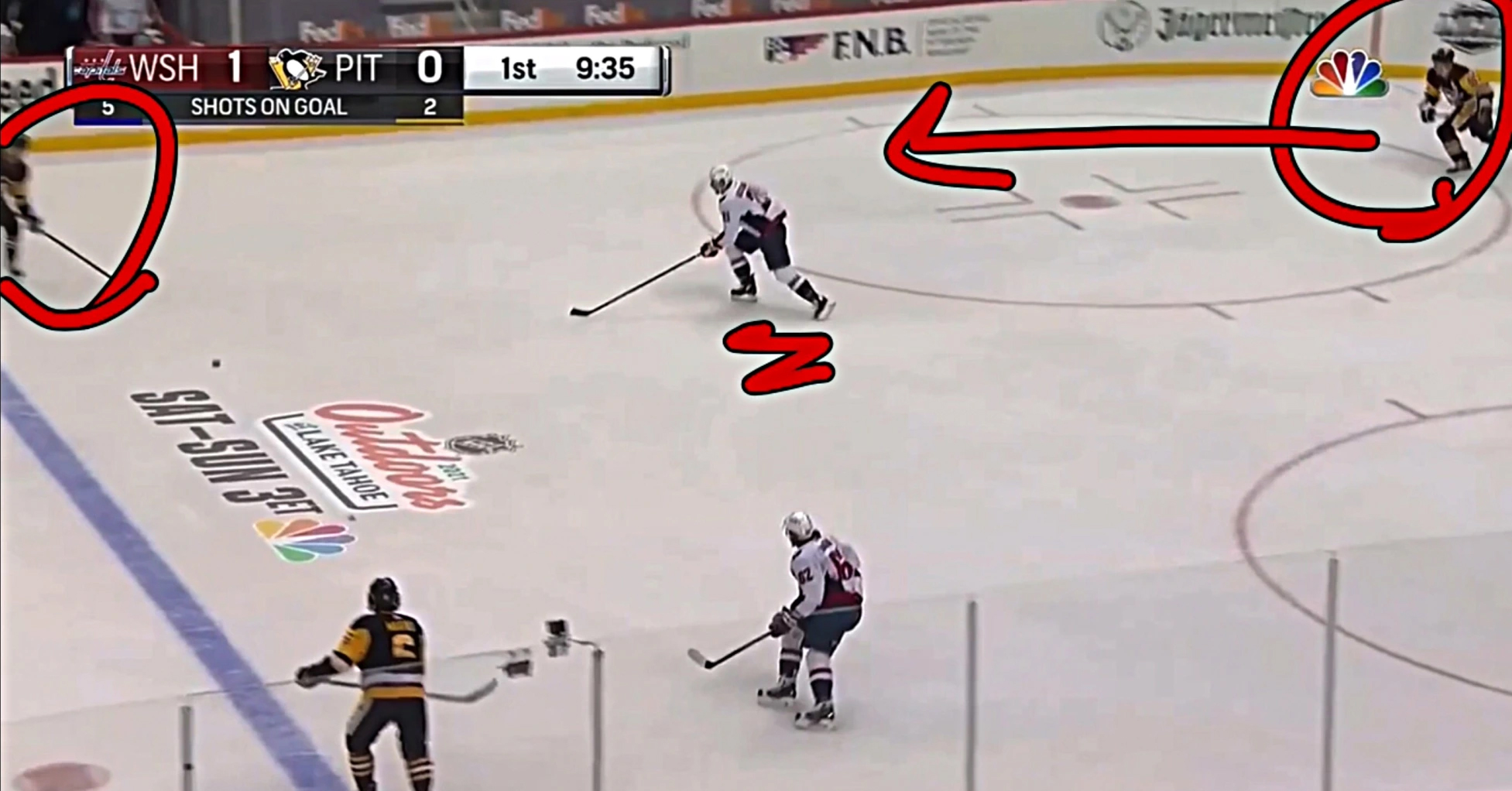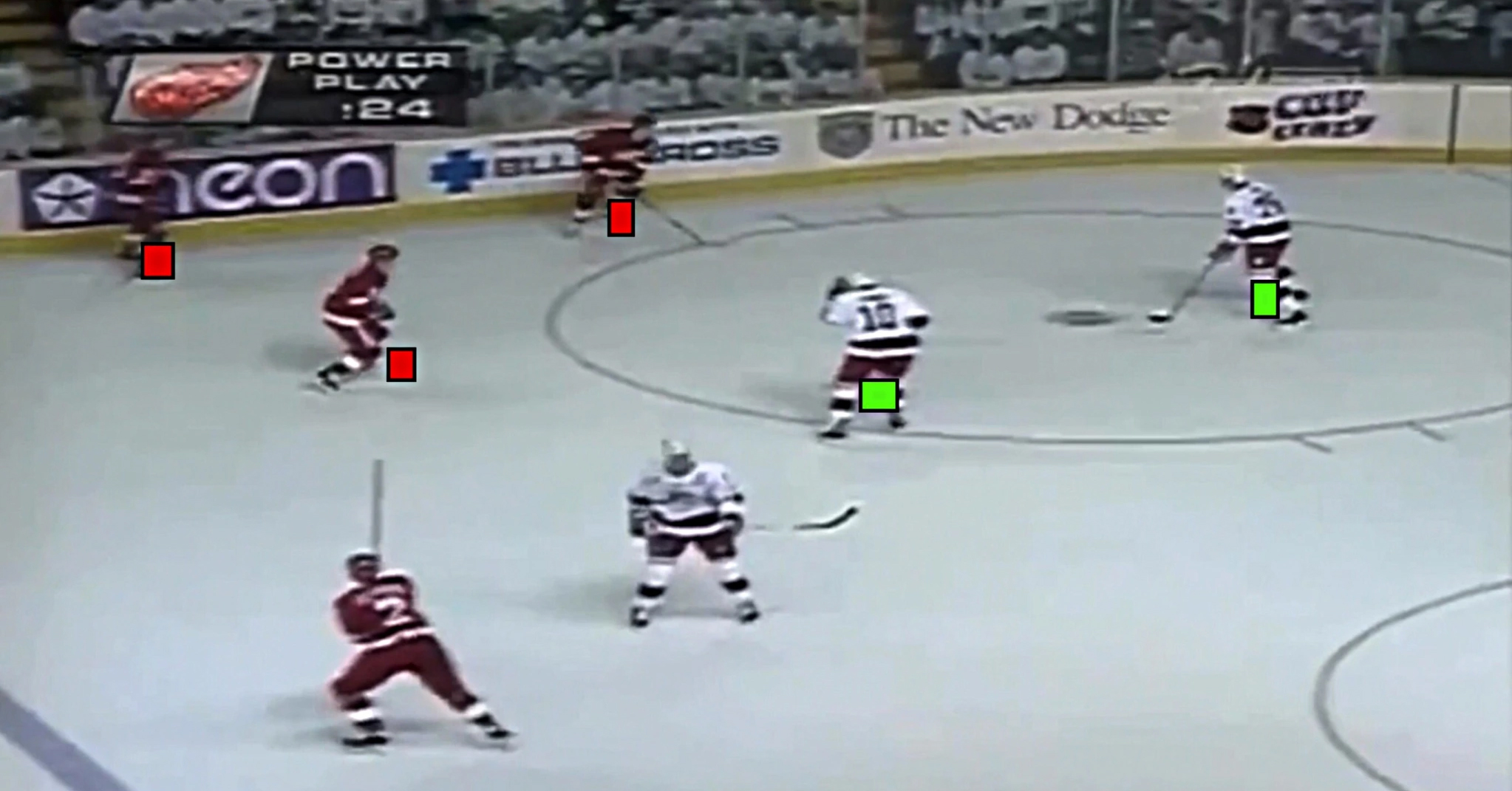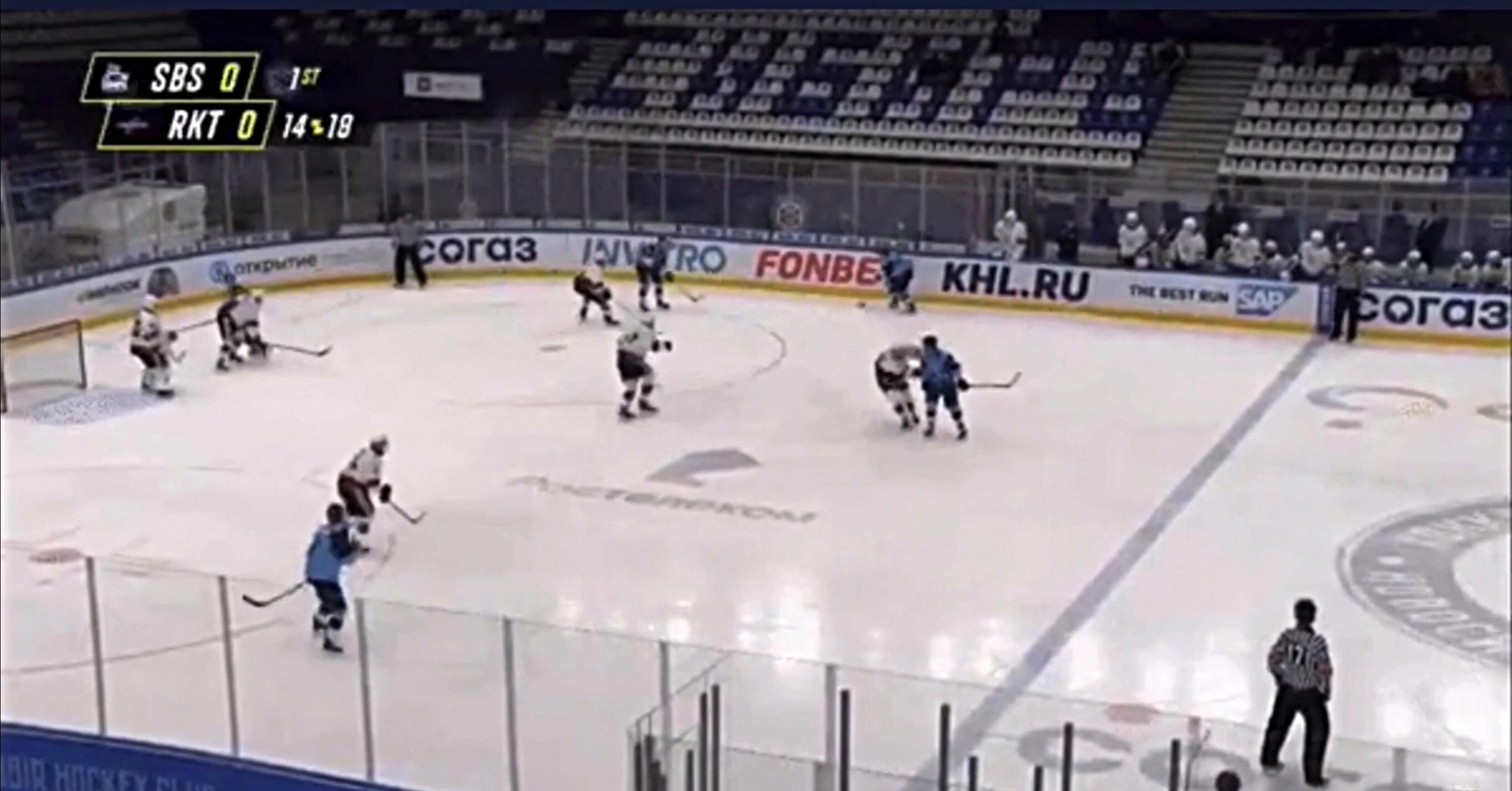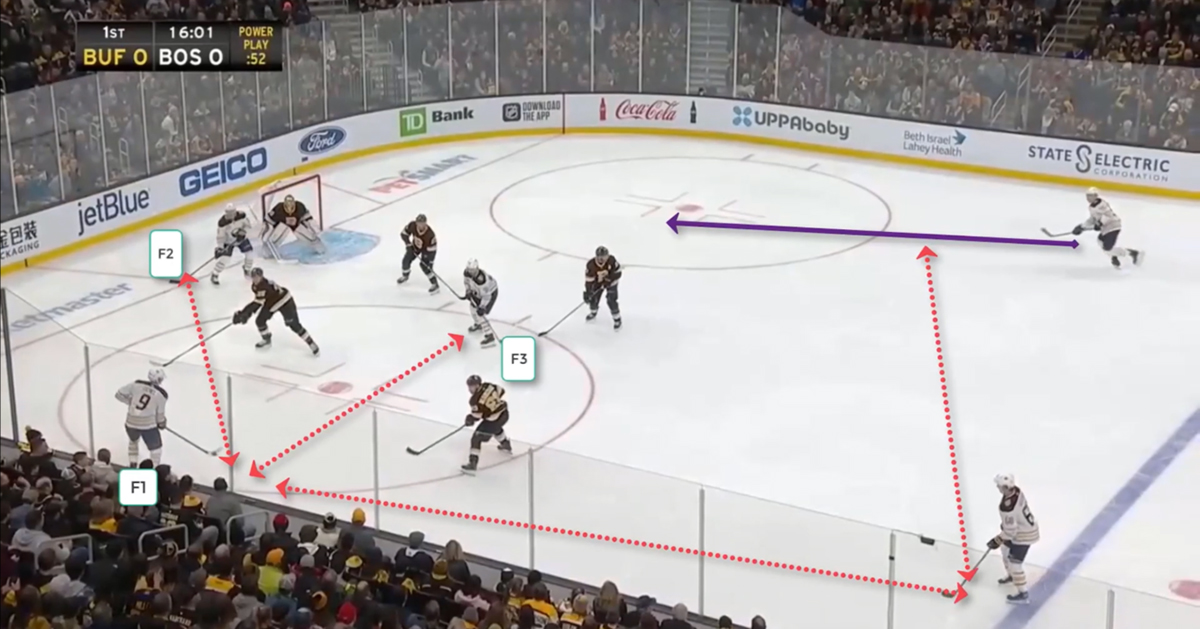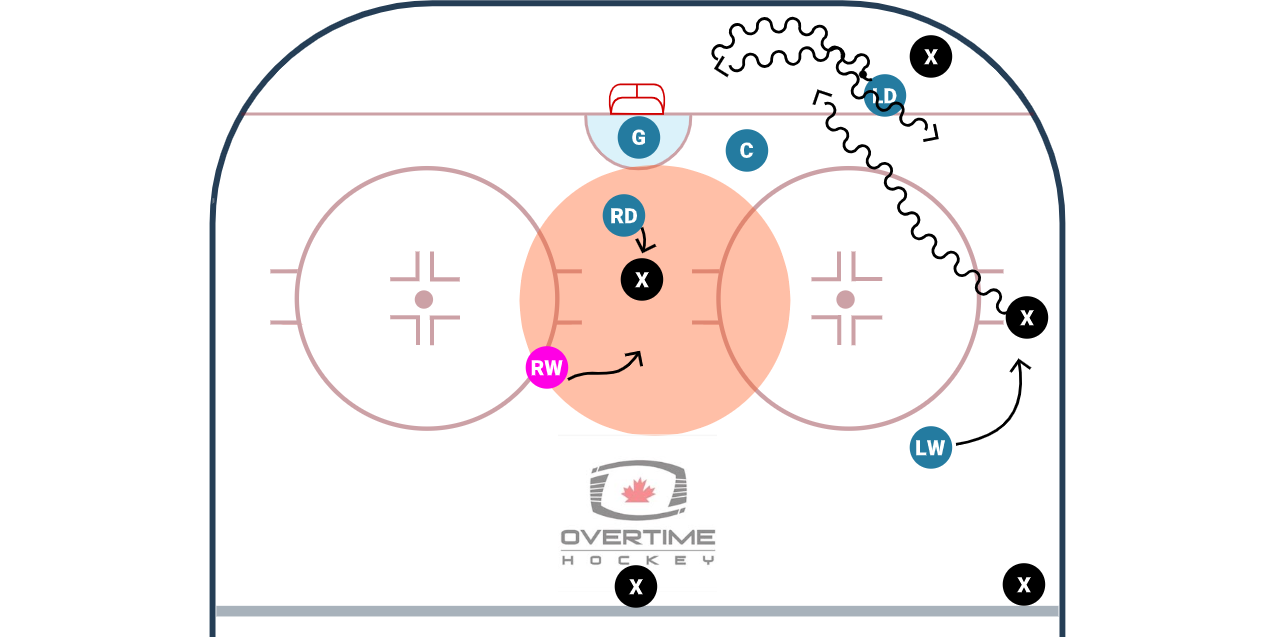
Defensive Zone Coverage is something I get asked about more than anything simply because it is one of the most confusing zones to fully understand and right behind the Neutral Zone, one of the hardest to master. The stakes are a bit higher here because a mistake can end up with the puck in the back of your net before you can blink.
In an earlier post I talked about how poor defensive zone set ups can make breaking the puck out a nightmare, here I want to talk about an option that is very easy to implement: Sagging Zone Coverage.
The Set Up
I like to show these set ups with the puck down low because it shows the activation that makes it a "sagging" zone but essentially nothing changes with the regular zone coverage, Strongside (SS) defenceman is responsible for puck carrier below the dots, centre is responsible for the lane between the puck and the post as well as any on puck support that SSD may need, SS winger is responsible for the point and WS defenceman is responsible for net front. The only change here is the WS winger will have a responsibility to the slot in addition to their point responsibility.
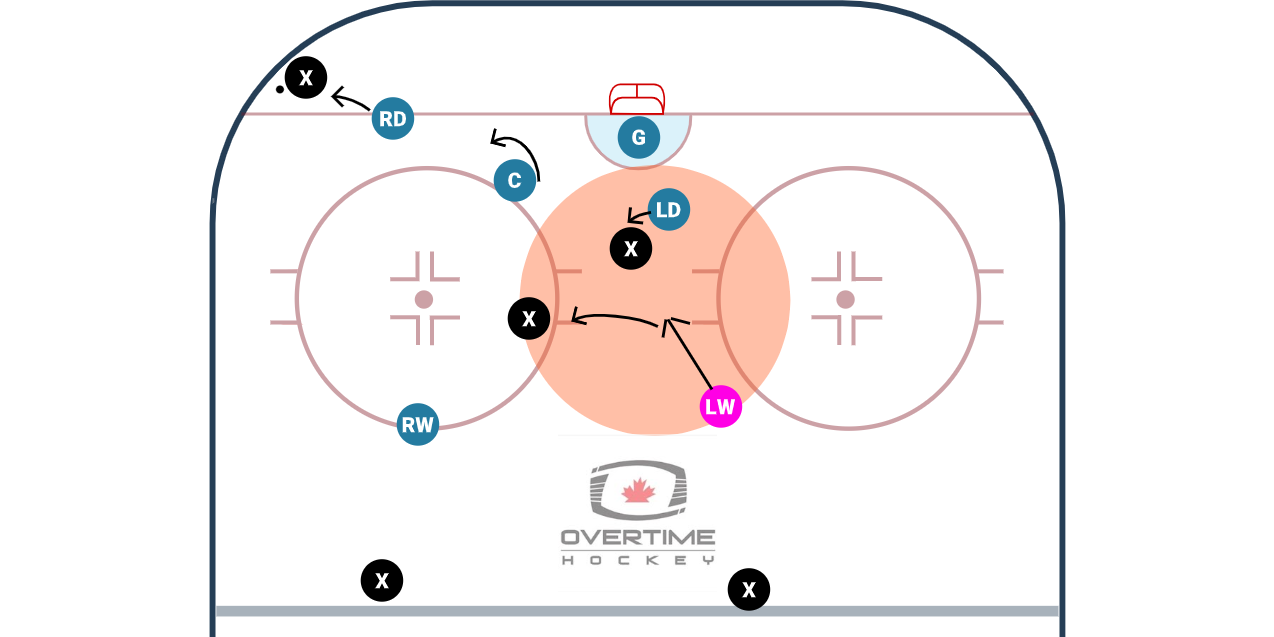
The Why?
Providing support in the house is important especially at the younger ages when there is not a ton of threat from the point. With the older ages, we assume our players are strong enough skaters to get from the house out to the point so the threat of the open point is outweighed by the threat from the house. Whether the opponent is playing an Overload where that F2 would be along the wall or a potential 3 High like this image is starting to show, out numbering the opponent in the house is the goal of this set up.
Exchanges
If the opponent chooses to cycle, rim or pass the puck to the weakside, the shift & exchanges are simple. The WSD exchanges with the SSD to pick up puck carrier, C moves to SS, the WSW moves back to top of circle to cover point responsibility and the SSW now becomes the "Sag".
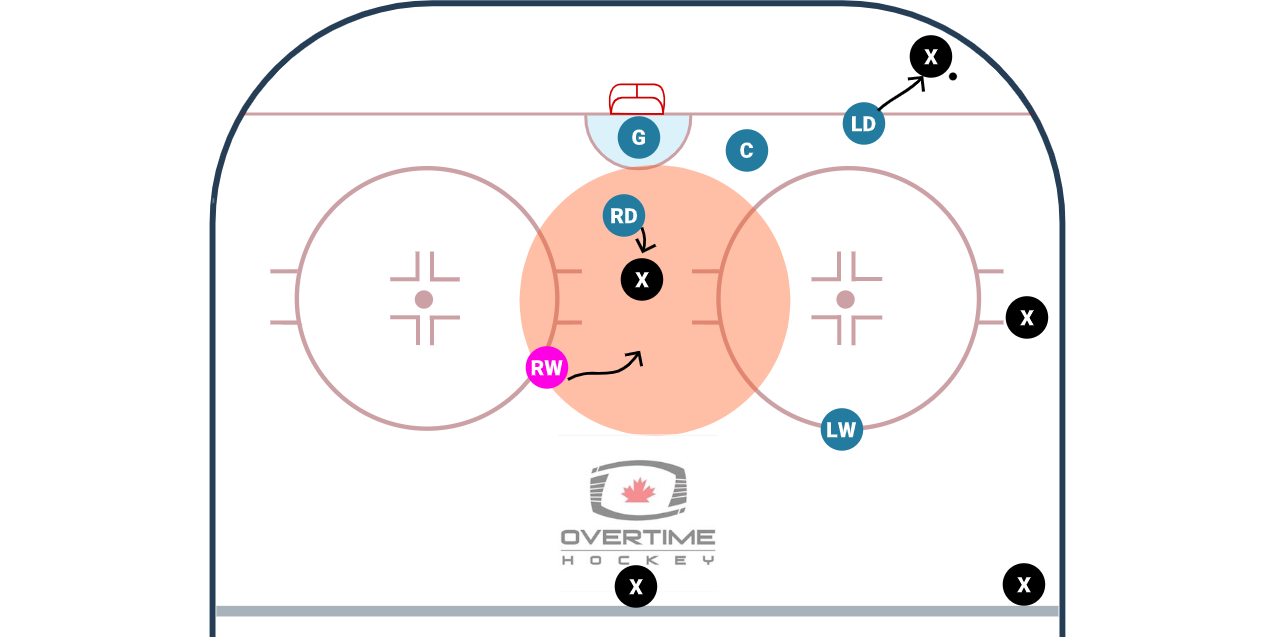
How To Transition To Breakout
As I mentioned in the breakout post, the coverage you set up has a direct connection to breaking the puck out effectively. There are two direct options off the possession, if the SSW is open our SSD can work the puck up the strong side, if there is a high pinch tendency or a F3 presence on the strong side, our SSD can either wheel, dish to the C (who is always supporting the puck) or as a very last resort, rim the puck to the weakside. The key to this is that the C is always facing the puck and is ALWAYS an option. Some refer to this as Low & Slow ensuring they never get to North of the puck.
The weakside winger needs to read the play and either be strong side support on the breakout (one touch option from the SSW or retrieve a glass and out puck) or get to their spot on the boards for a reverse or rim.
